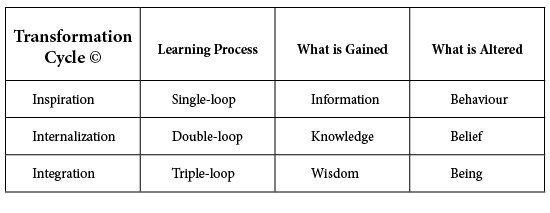In his 1990 book, Shared Minds: The New Technologies of Collaboration, Michael Schrage wrote that collaboration added real value by creating both better ideas and better work. Unquestionably, we see this truth demonstrated throughout the many collective systems in current society — education, government, science and technology, health care and business.
My own personal experience with publishing written work effectively illustrates the significance collaboration is playing in the business world. One of my collaborators, Apple Inc., designed free software, iBooks Author, which allows me to publish sophisticated, coloured e-books of my content. Although the iBooks software is only accessible on Mac computers, phones and tablets, my e-books are immediately plugged into the vast network of consumers on iTunes. In other words, iTunes hosts the sale and distribution of my products. Of course, Apple Inc. takes a cut of the profit but its share is considerably less than the revenue model of a traditional publisher that might pay the writer $1 for each book sold. Or, even more painful, the 60% cut a bookstore takes for merely keeping the book on its shelves.
Undoubtedly, over the last 25 years, the use of digital collaboration platforms disintegrated traditional competitive revenue models in several industries, most notably music and publishing. These software and hardware collaboration tools allowed the creation of WYSIWIS (what you see is what I see) shared workspaces. Such multi-user digital collaboration platforms were intended for shared creativity, shared invention and shared revenue. However, they also raised awareness about the potential for disintegrating the social structure and bypassing the f2f tools that empower and maximize creativity and innovation, which is where true learning takes place. When the social interaction that sparks innovation is avoided, the ultimate loss is a lack of shared understanding and growth.
We know it takes a village to raise a child, and much like a child, our social network is where inspiration, internalization and integration are nurtured. These are the bedrock skills of innovative people and societies.
 Unfortunately, the majority of digital collaboration platforms do not include within their design a social process that allows for the human experience of shared understanding, shared learning and shared transformation. In today’s world of competing digital collaboration platforms, Schrage sees that “living collaboration as a value is intellectually and emotionally different than just practicing it as a skill.” Within a digital shared space, we are more likely to practice the skill whereas in a f2f collaboration, “sharing” has an attached set of cultural norms or rules of behaviour, which need to be defined and agreed upon. It is the f2f conversations that ultimately decide and allow emotional and cultural diversity to be networked in order to maximize creative collaborative potential.
Unfortunately, the majority of digital collaboration platforms do not include within their design a social process that allows for the human experience of shared understanding, shared learning and shared transformation. In today’s world of competing digital collaboration platforms, Schrage sees that “living collaboration as a value is intellectually and emotionally different than just practicing it as a skill.” Within a digital shared space, we are more likely to practice the skill whereas in a f2f collaboration, “sharing” has an attached set of cultural norms or rules of behaviour, which need to be defined and agreed upon. It is the f2f conversations that ultimately decide and allow emotional and cultural diversity to be networked in order to maximize creative collaborative potential.
Although I can agree with Schrage that “shared minds need not be human”, it is the distinct human attributes of intuition, creativity and loving kindness that lure me into collaborative relationships. I would go so far as to say they are what feed our individual and collective souls.
Think about your own collaborations. What was your main reason for participating?
For more on collaboration and innovation, click here.





